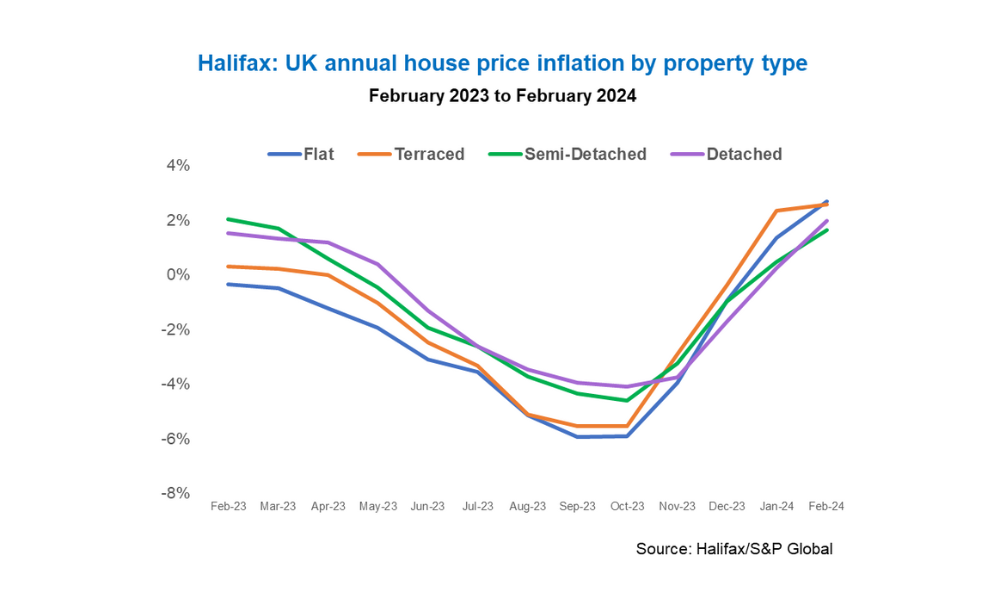Pandemic-era trend of seeking more space has reversed

Demand for smaller homes significantly contributed to the growth of property prices across the UK, according to mortgage lender Halifax.
Nationally, annual property price growth climbed to 1.9% in February, recovering from a low of -4.1% in October 2023. Prices have increased by £5,318 over the past year, now just £7,801 shy of the peak seen in August 2022.
Despite economic challenges, property prices have surged 19.9% above pre-pandemic levels, equating to an increase of £47,573. This contrasts with the 13.4% rise in the four years preceding March 2020.
The steep rise in interest rates over the past two years initially caused many prospective buyers to reconsider their plans. However, with interest rates stabilising, smaller homes have seen the most substantial price increases. This shift is partly due to buyers adjusting their expectations in response to higher borrowing costs and the broader cost-of-living pressures.
The resilience of the first-time buyer market has been crucial, Halifax noted, with first-time buyers constituting 53% of all home purchases with a mortgage in 2023 — the highest since 1995. Notably, flats and terraced houses, popular among first-time buyers, represented 57% of these purchases, though this varied widely by region.
The pandemic-era trend of seeking more space has reversed, with flats experiencing the highest price increases early this year. Prices for flats rose 2.7% annually in February, despite a drop to -5.9% last autumn. The average price for a flat is now just £5,551 below its August 2022 peak.
Regionally, Scotland recorded the highest price growth for flats, up 5.9% over the last year. Yorkshire and Humberside was the only region to see a decline in flat prices.

Nationally, flats remain 11.9% above their pre-pandemic prices, with the east Midlands showing the most significant gains.
The demand for terraced homes also rose, with a 2.6% increase over the last year, reaching an average price of £224,173. The north east saw the most considerable annual growth in terraced house prices, at 7.6%.
In contrast, semi-detached homes saw the weakest growth, with a 1.7% increase over the last year. The average price for these homes is now £295,199, with prices falling in eastern England, greater London, and the south east.
Detached houses experienced a 2% growth in February, reaching an average price of £451,655. Yorkshire and Humberside saw the most significant increase in prices for detached homes over the past year.
“It’s important not to gloss over the challenges facing the UK housing market, given the impact of higher interest rates on mortgage affordability, coupled with a continued lack of supply of new homes,” said Amanda Bryden (pictured), head of Halifax Mortgages. “But scratch beneath the surface and there is a more nuanced story, one which shows that demand for different property types in different parts of the country can vary hugely.
“As interest rates have stabilised and buyers adjust to the new economic reality of owning a home, one way to compensate for higher borrowing costs is to target smaller properties. This is especially true among first-time buyers, who have proven to be resilient over recent years, and now account for the largest proportion of homes purchased with a mortgage in almost 30 years.
“We see this reflected in property prices for the first few months of this year, with the value of flats rising most sharply, closing the ‘growth gap’ on bigger properties that’s existed for most of the last four years.”
Any thoughts on the findings of this Halifax research? Tell us by leaving a comment in the discussion box at the bottom of the page.



